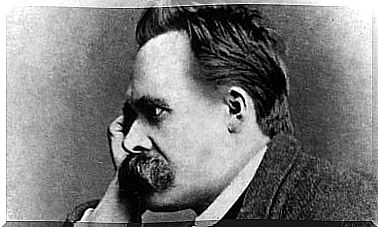Generalized Anxiety Disorder And Behavioral Therapy

Anxiety and excessive worry are symptoms of Generalized Anxiety Disorder (GAD). In this regard, Dugas and Ladouceur pointed out that people with GAD, for example, are more concerned about pointless circumstances.
People with Generalized Anxiety Disorder worry about things that may not happen and are always on the alert.
Cognitive Behavioral Therapy (CBT)
Cognitive behavioral therapy (CBT) combines Beck’s therapy and relaxation techniques. Clinical research confirms that cognitive behavioral therapy and relaxation techniques help treat generalized anxiety disorder.
Generic cognitive behavioral therapy consists of:
- The determination of internal and external factors that cause anxiety and how people are responding.
- Controlling these factors to avoid worry.
- Relaxation. There are several techniques such as progressive relaxation, slow breathing and meditation.
- Cognitive restructuring. The patient first identifies thoughts, images, and beliefs associated with fear. Then the Socratic dialogue is used to examine the pros and cons and to interpret these feelings.
- Gradual exposure of the patient to internal factors that cause anxiety. This can teach the patient to deal with his fear well.

Borcovec’s Cognitive Behavioral Therapy in Generalized Behavioral Disorder
Borcovec’s cognitive behavioral therapy contains all the elements of generic cognitive behavioral therapy but includes two other elements: acceptance and commitment.
It is also important to minimize negative thoughts. The idea is to live in the present without creating false expectations about the future. The patient must also live according to values. Identification of the patient’s values is therefore important here, to help them live by those values.
Barlow’s Therapy for Generalized Conduct Disorder
Brown, O’Leary, and Barlow developed a treatment for generalized anxiety disorder that consists of:
- Identifying the problem.
- Justifying the treatment.
- Relaxation. Based on Borkovec’s progressive relaxation. However, any other technique can be used.
- Cognitive restructuring. Explanation of concepts such as negative thoughts, how they are affected by what is happening in the present and how these interpretations and predictions can affect the patient’s life. In addition, you need to identify these predictions and interpretations to examine them later.
- Exposure therapy.
- Preventing constant alertness. The patient must stop to always be on guard.
- time management. Teaching the patient how to set goals and manage his time.
- Troubleshooting. Troubleshooting makes identifying problems easier.
This intervention can last from 12 to 15 individual weekly one-hour sessions. Some modern versions of this treatment also include assertiveness treatment, withholding medication, and involving the patient’s family.

Dugas’ approach to generalized conduct disorder
Dugas’s team suggests a different type of treatment that includes:
- Psychoeducation and realization treatment. This is to distinguish between realistic and unrealistic concerns.
- Is it useful to worry? The patient usually overestimates the benefits of worrying, while underestimating its negative consequences.
- Troubleshooting. To stop worrying about current issues, troubleshooting is advised. Teaching patients how to solve problems consists, for example, of problem orientation and problem-solving skills.
- Exposure therapy. Also showing the patient that avoiding his thoughts is counterproductive.
Revisions made in 2007
- Recognizing uncertainty and explaining behaviour. This module aims to help the patient stop worrying excessively.
- Relapse prevention. The therapist reviews with the patient all the things he has learned and reminds him to keep practicing.
Finally, the patient is encouraged to develop an action plan before the end of therapy. They need to set goals for themselves so that they can continue without the help of a therapist.

Metacognitive therapy in generalized anxiety disorder
Wells suggested that treatment for generalized anxiety disorder should focus on the patient’s concerns. It is about the ‘style’ of these concerns, not the content. This type of intervention consists of:
- Individual functional analysis.
- Teaching the patient to identify two types of beliefs: negative beliefs about worrying and dysfunctional beliefs about how useful they are.
- Verbal reconstruction and behavioral experiments.
- Elimination of negative strategies. An example of this is trying to control thoughts, defensive behavior, and avoidance. All these strategies hinder self-regulation processes and support a generalized anxiety disorder.
Worrying is a warning sign. The way your worries are activated has a lot to do with your ability to interpret reality and the information you perceive. When this alarm system is not working properly, excessive worrying can lead to suffering.









